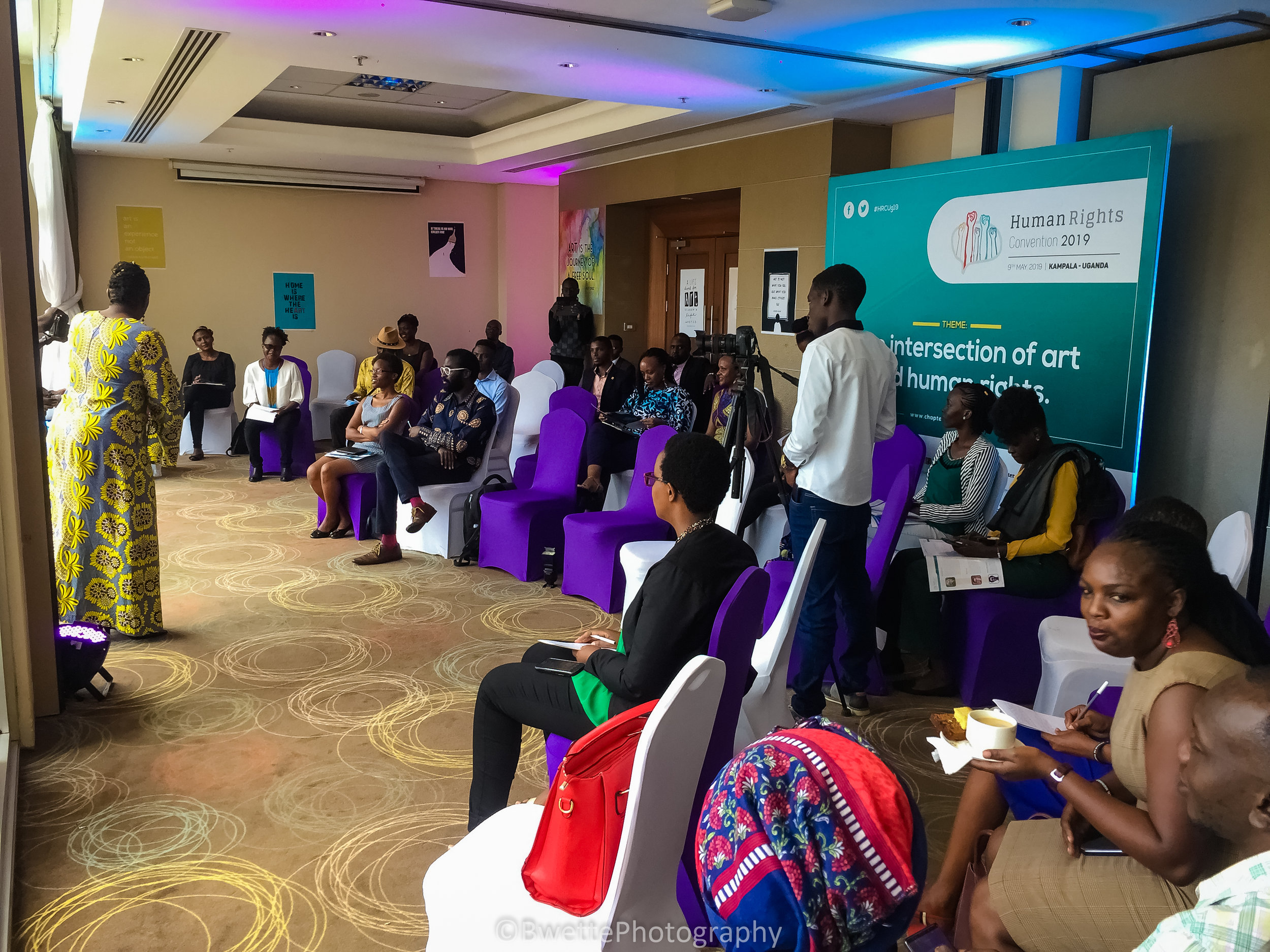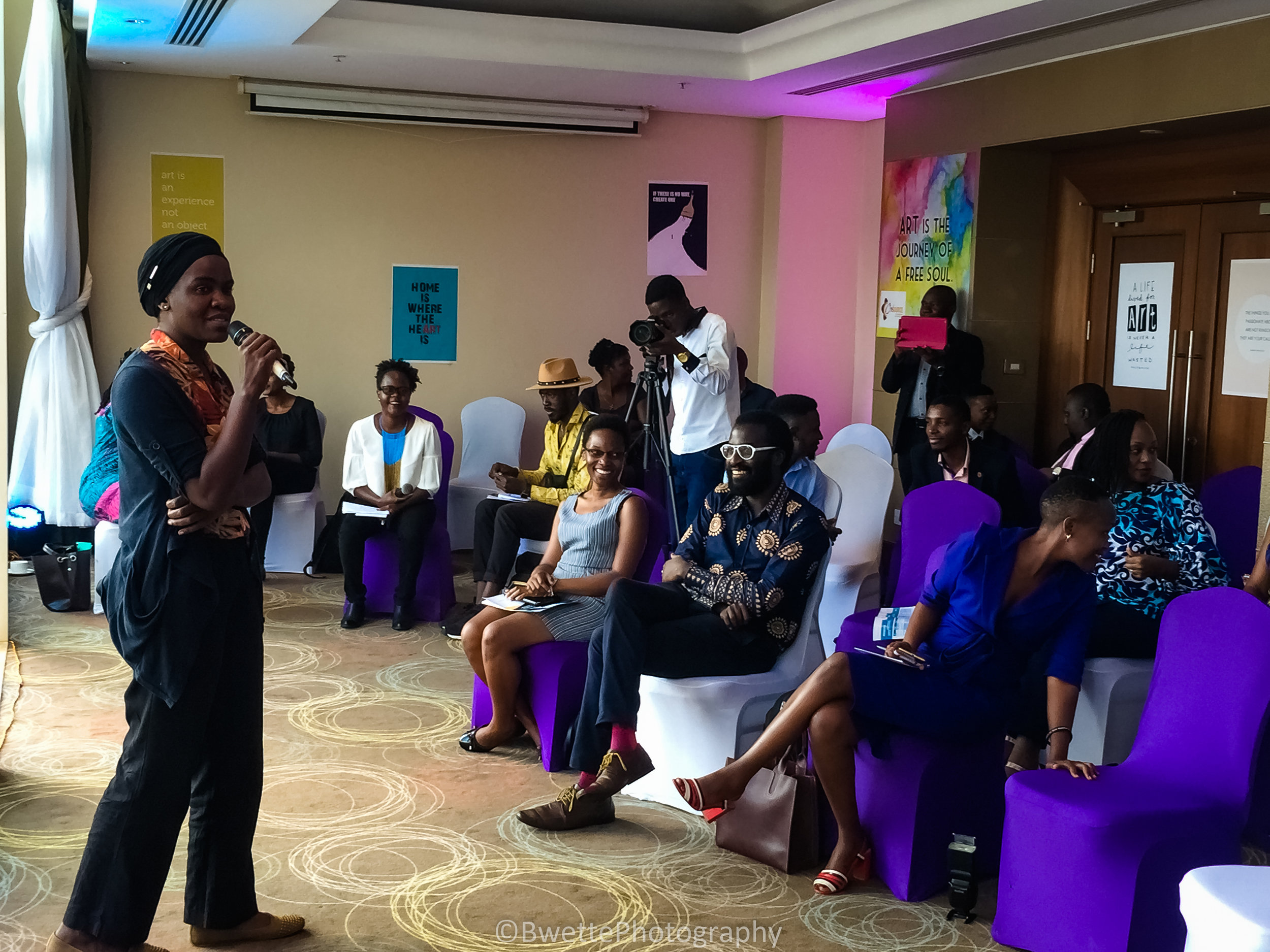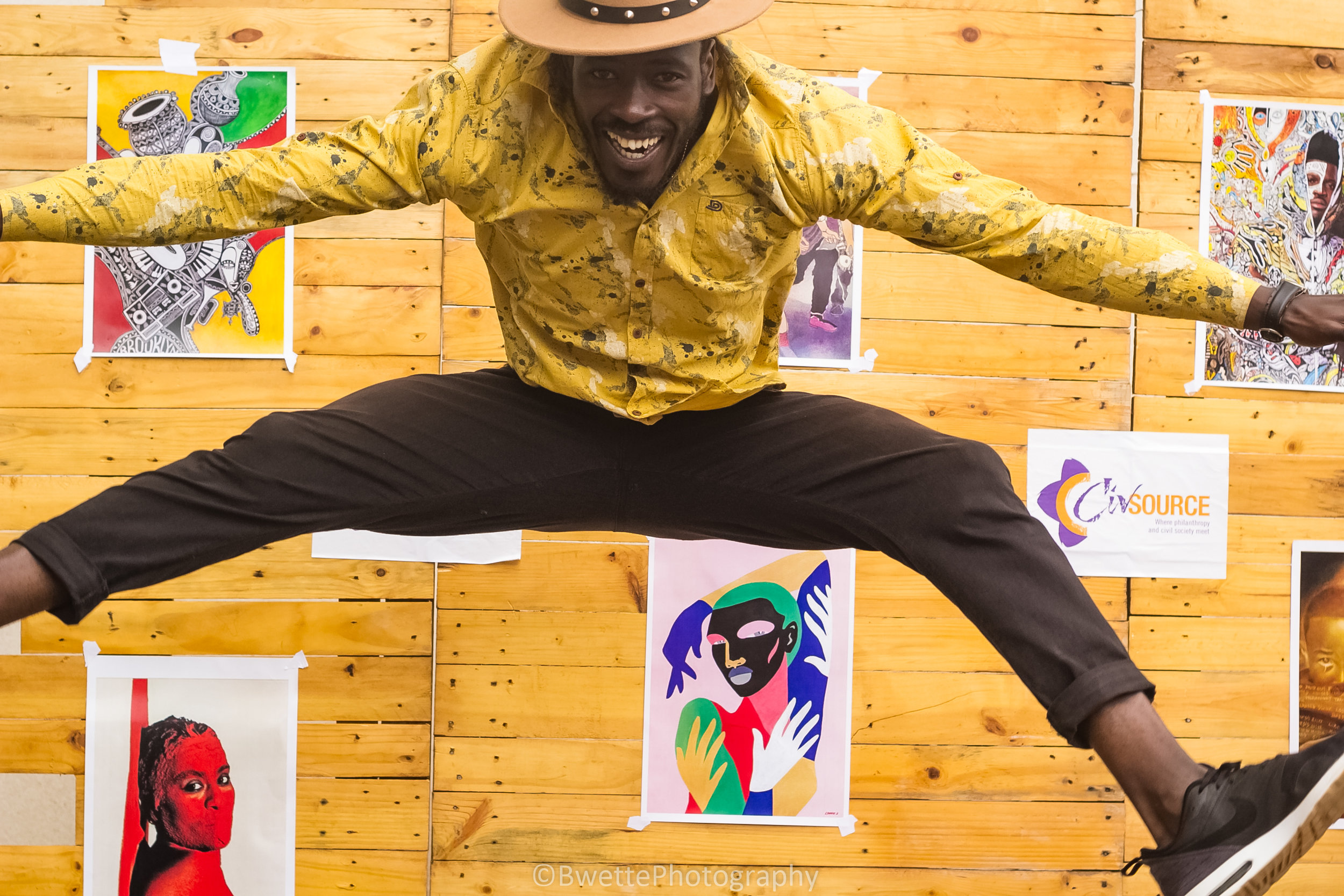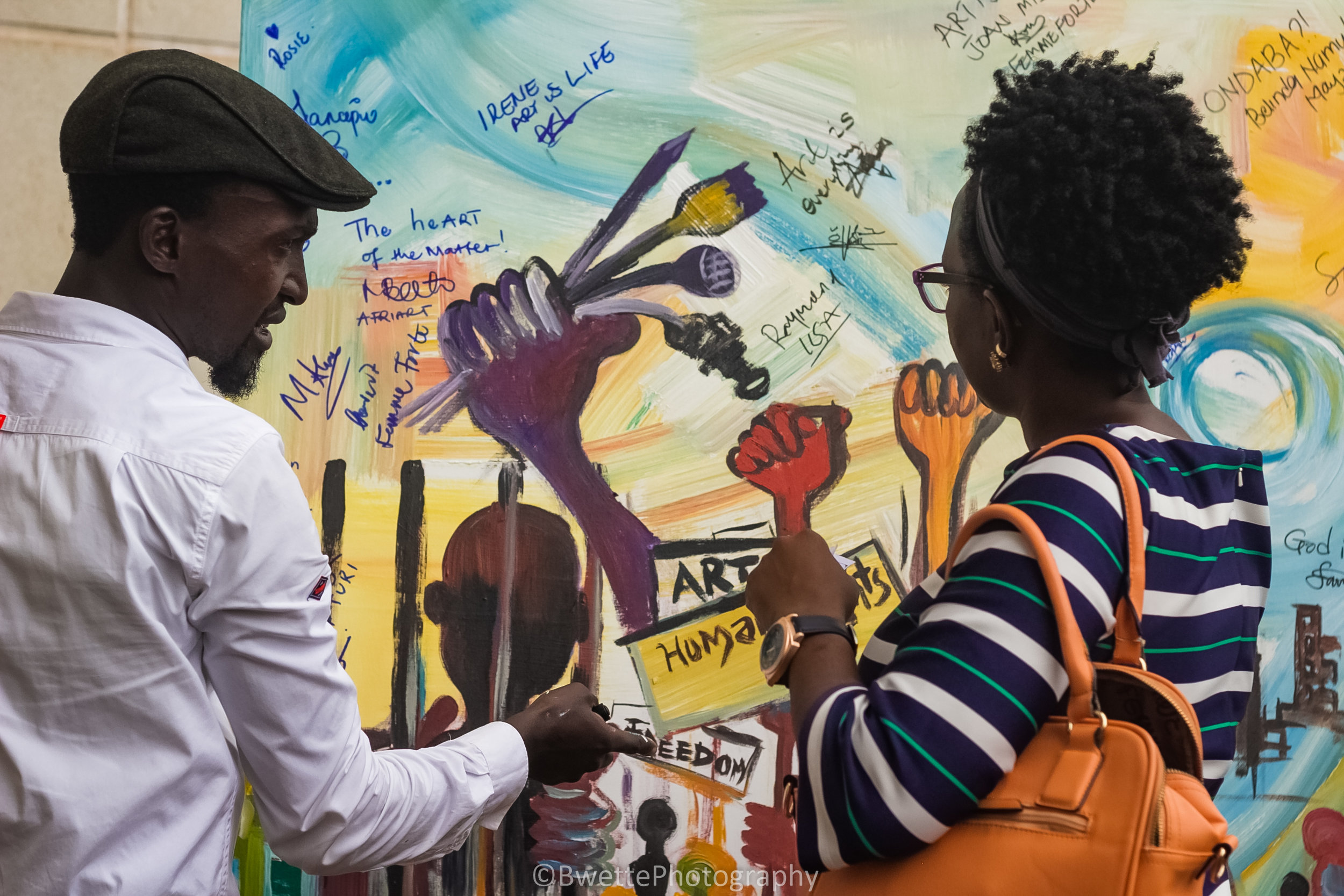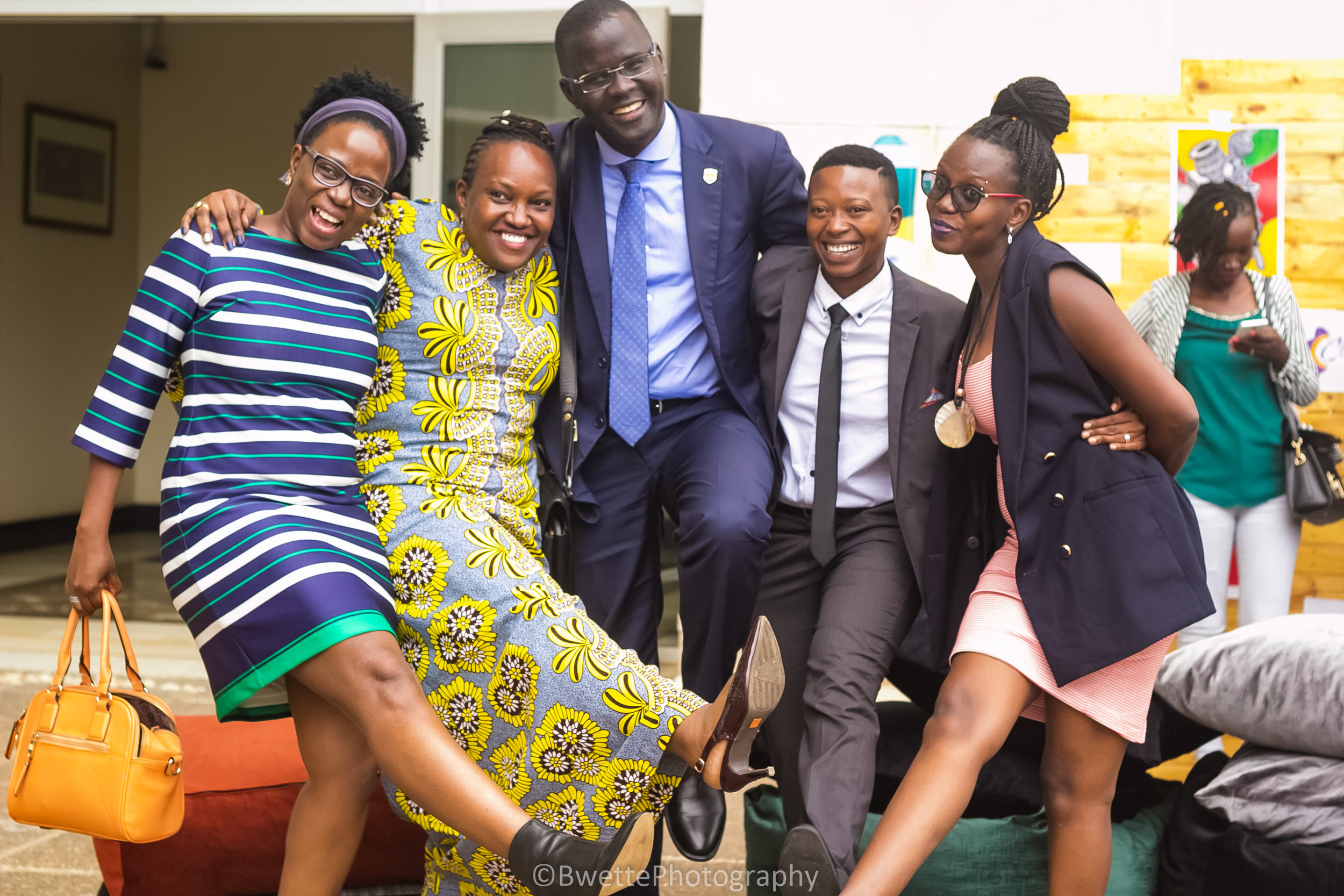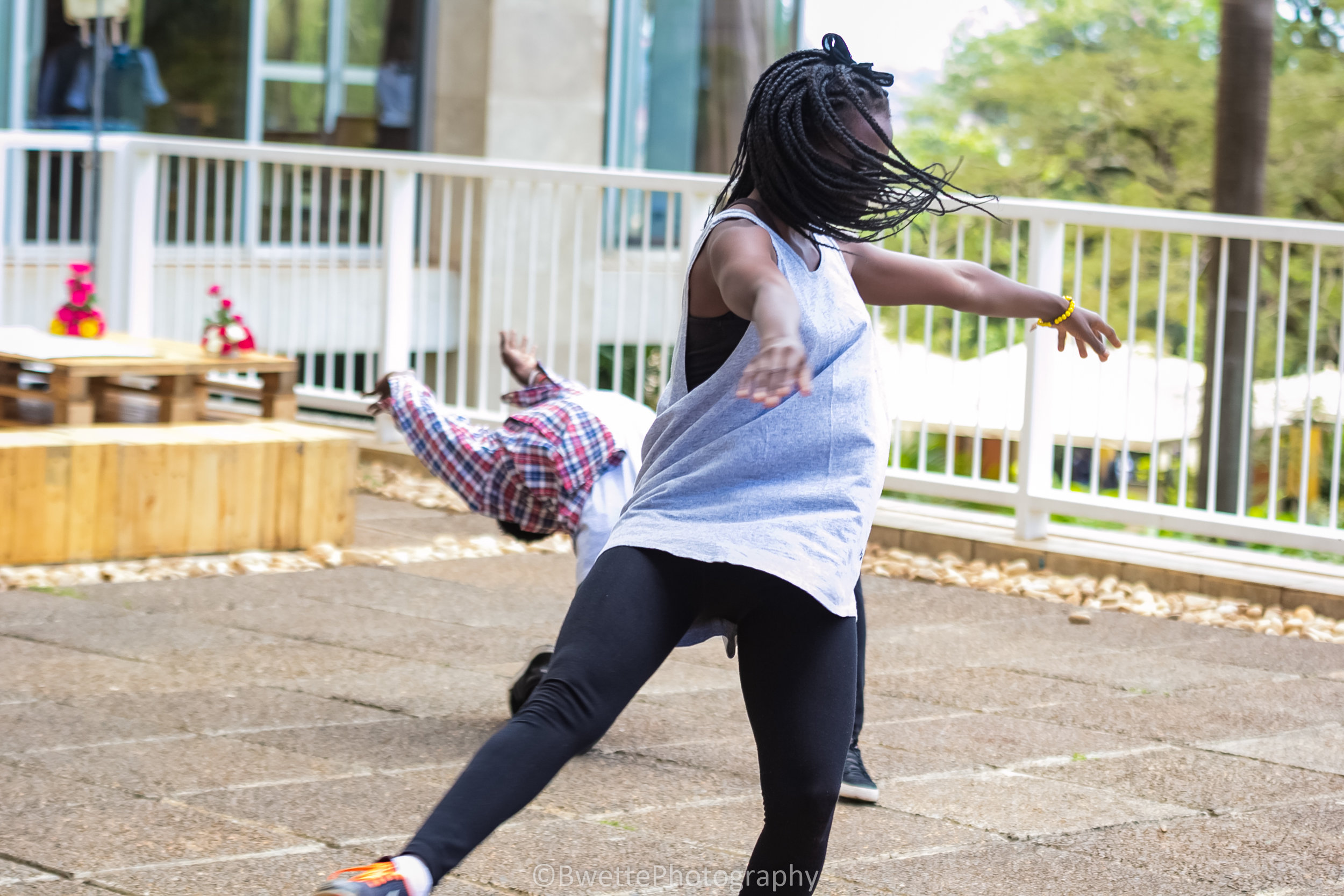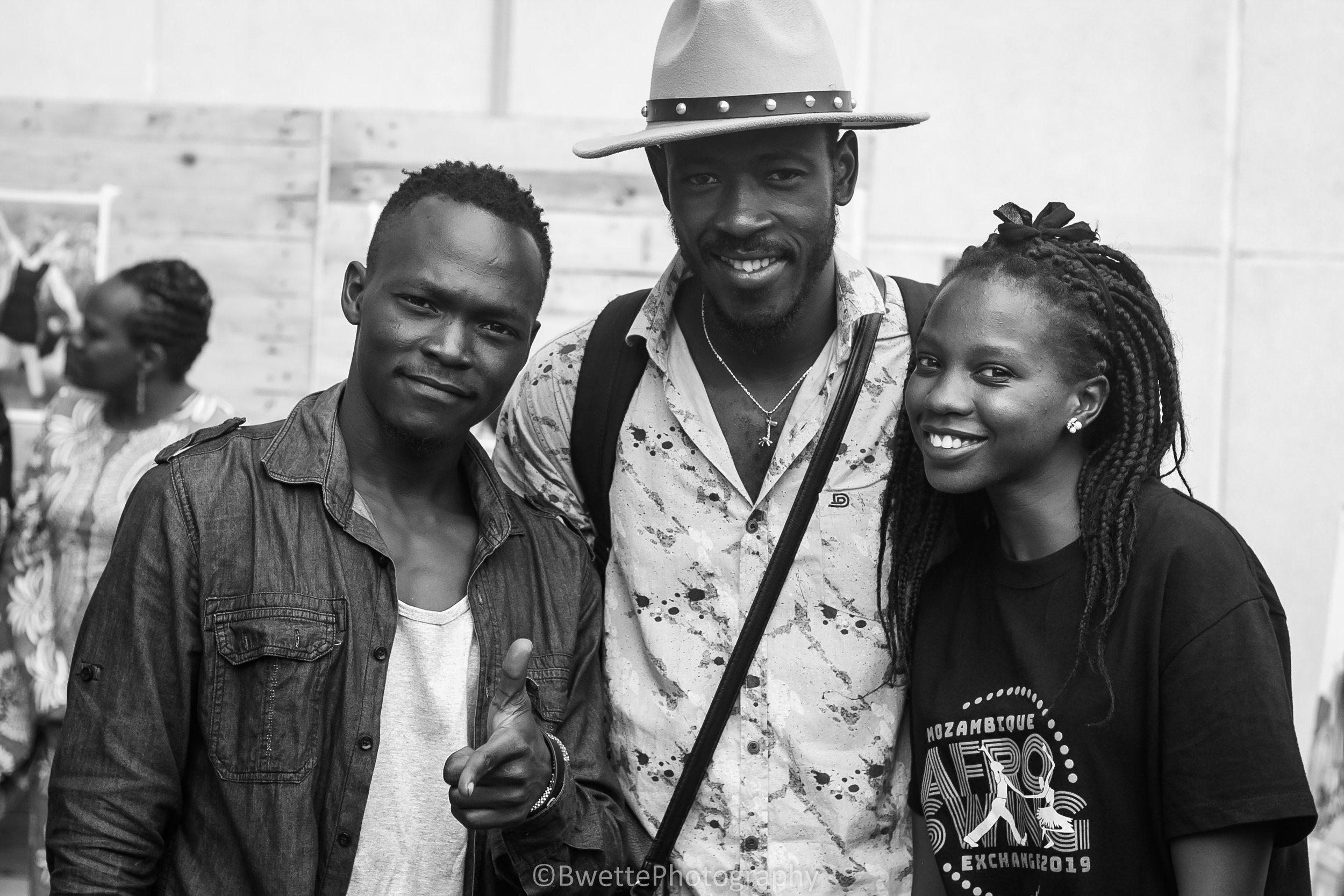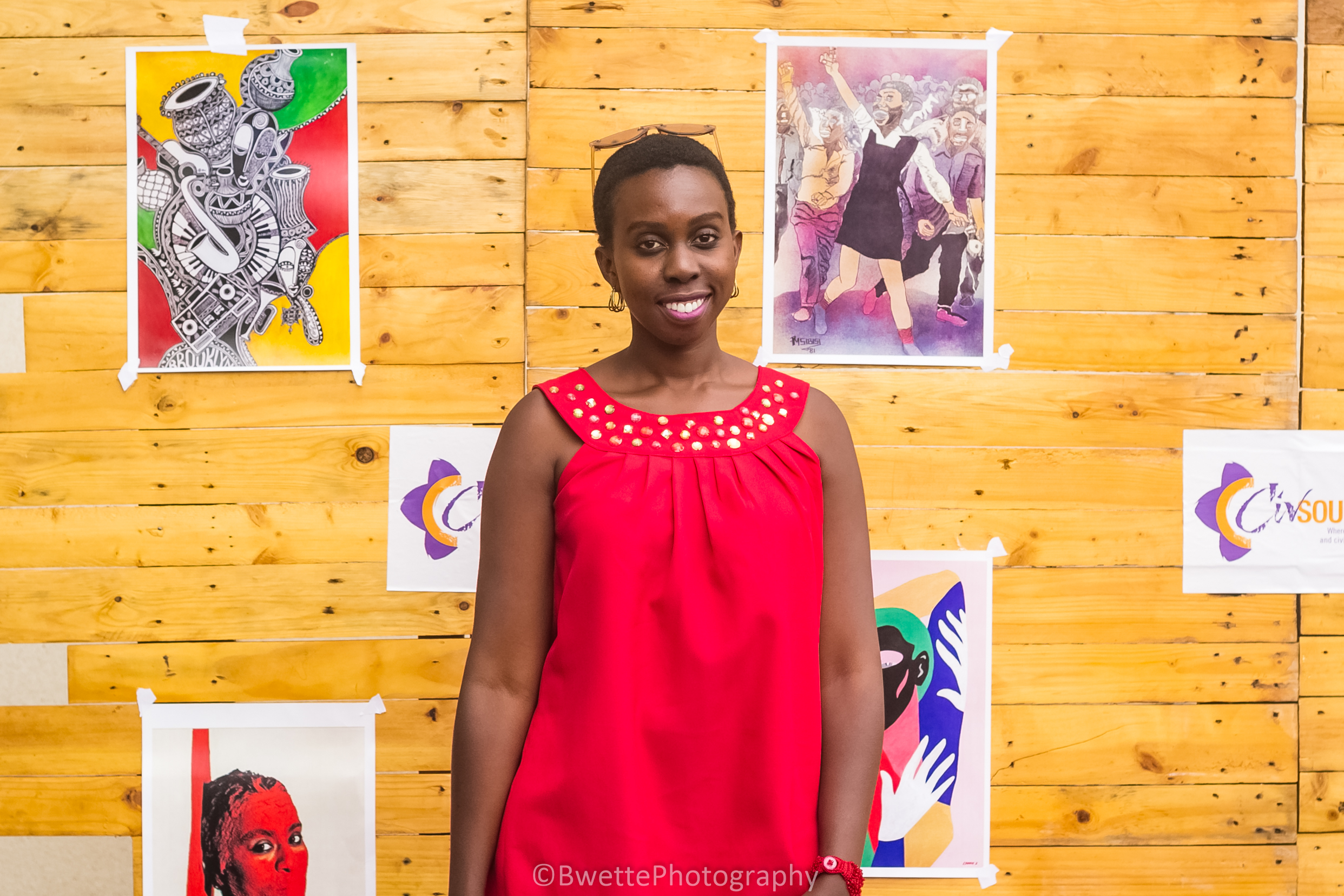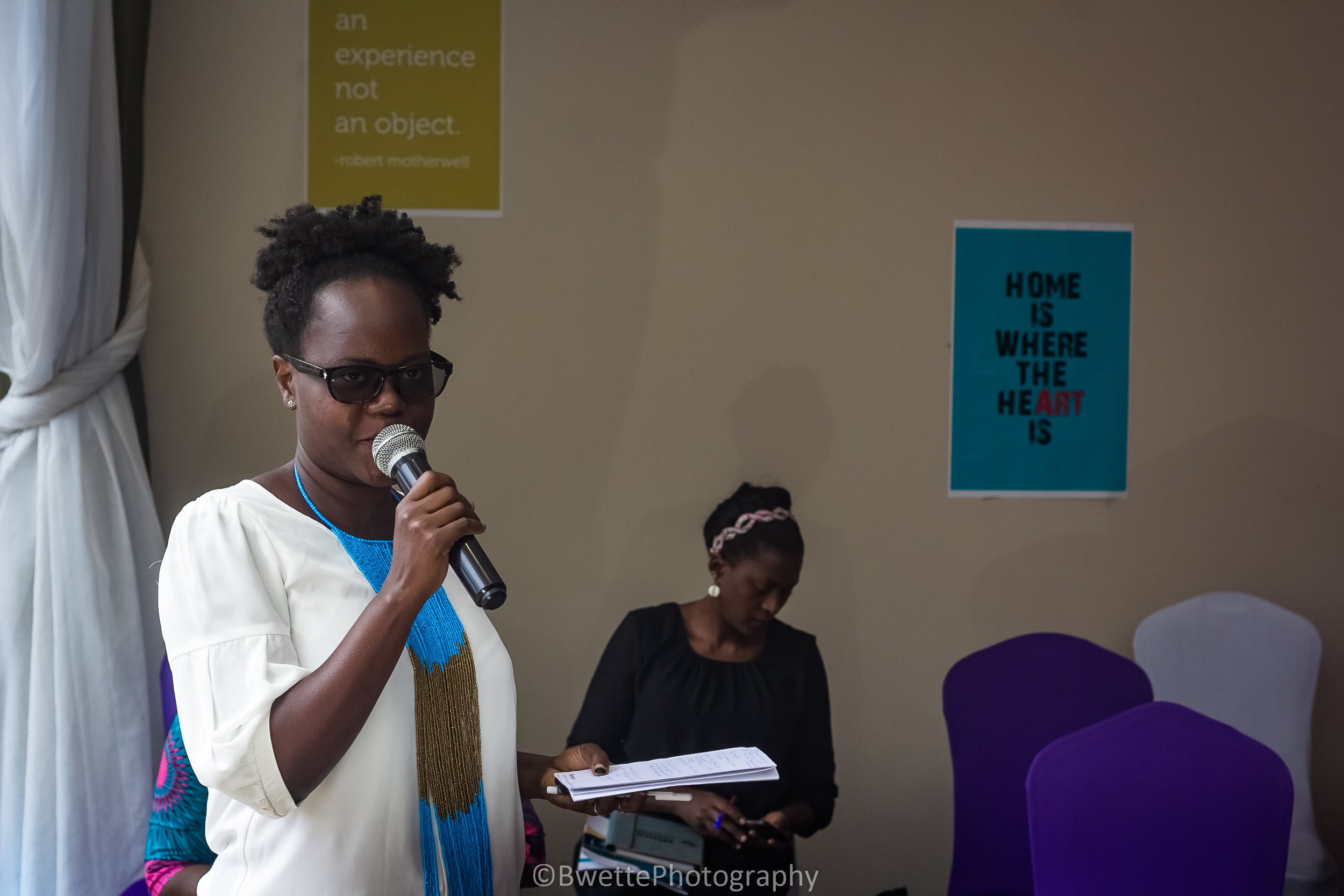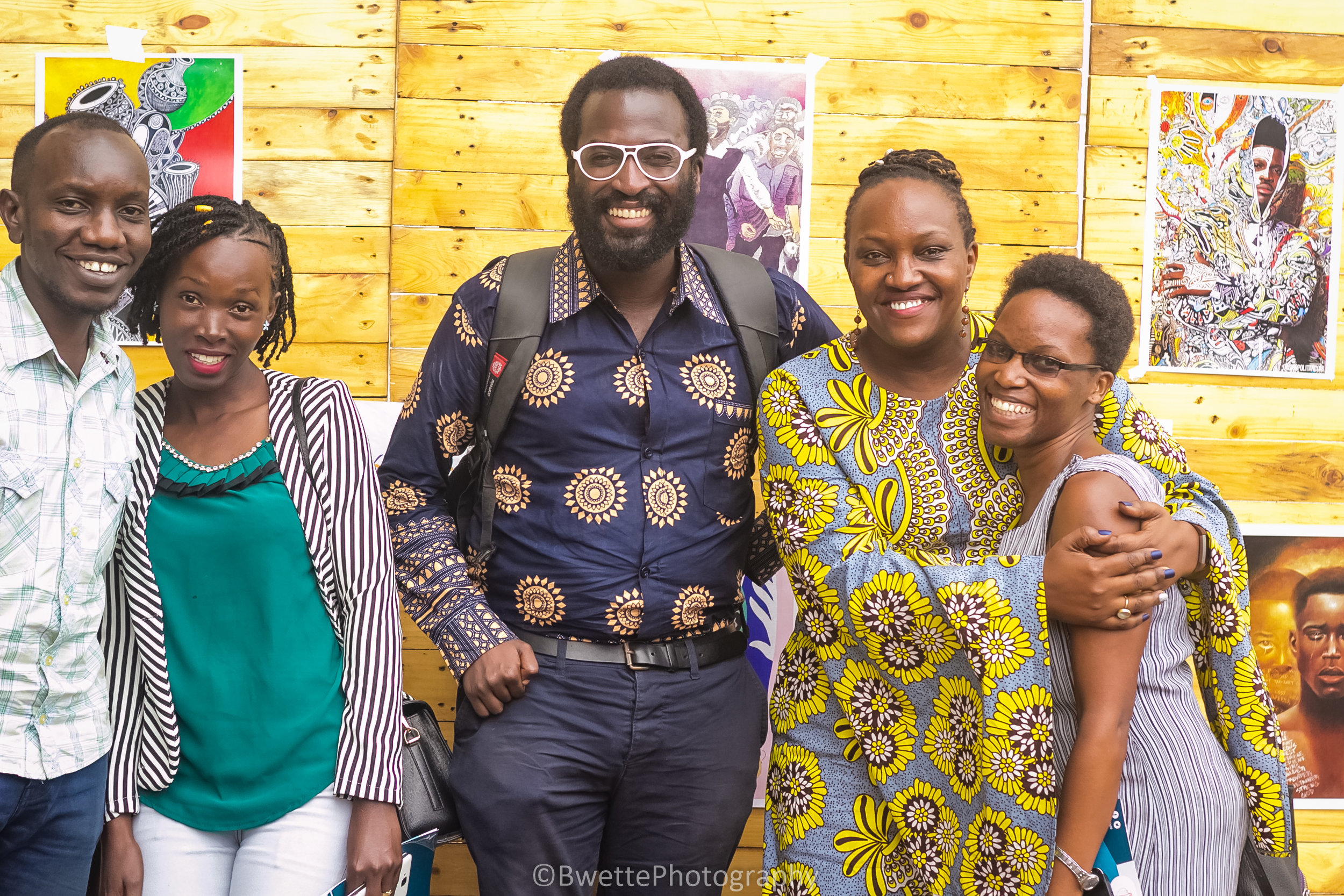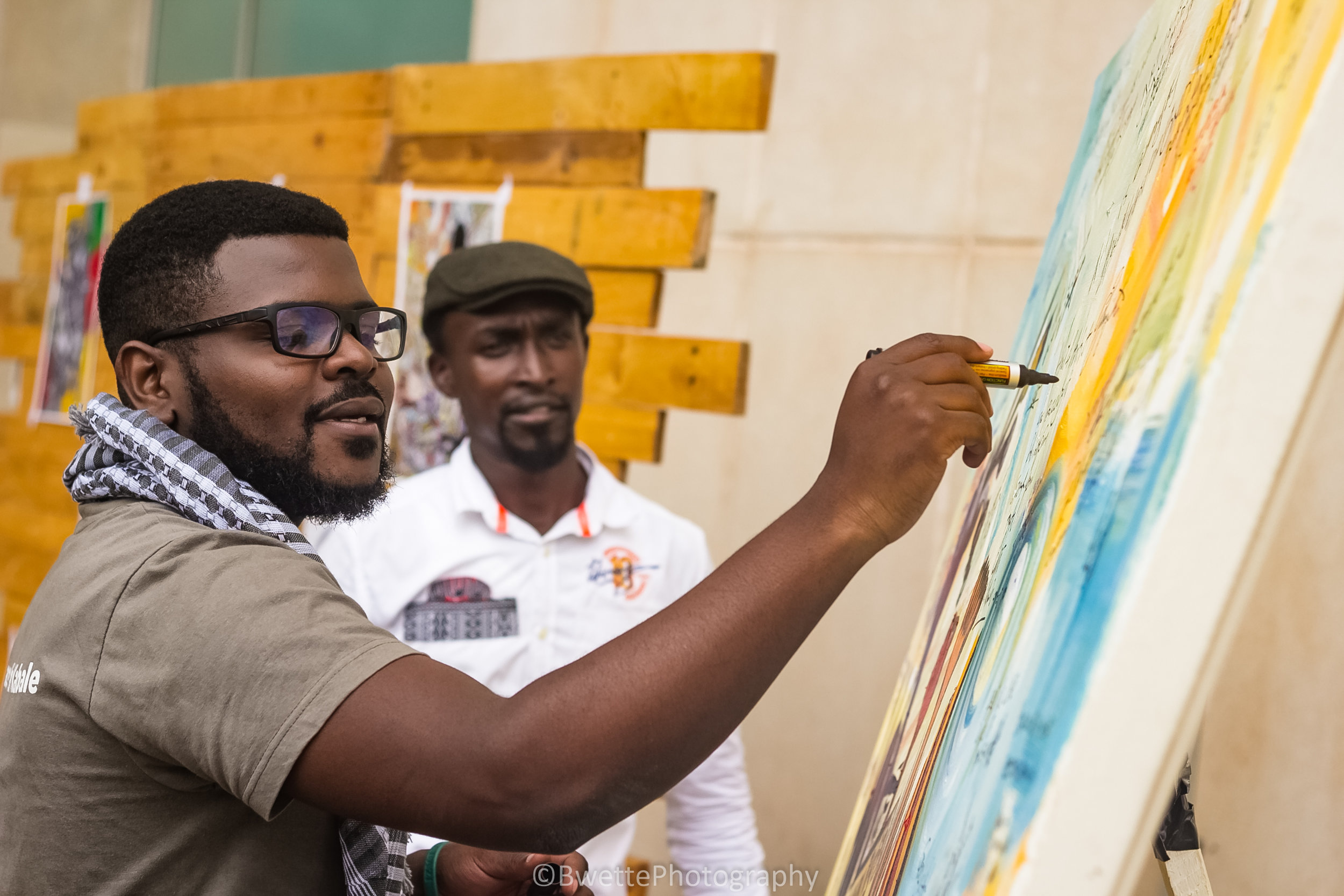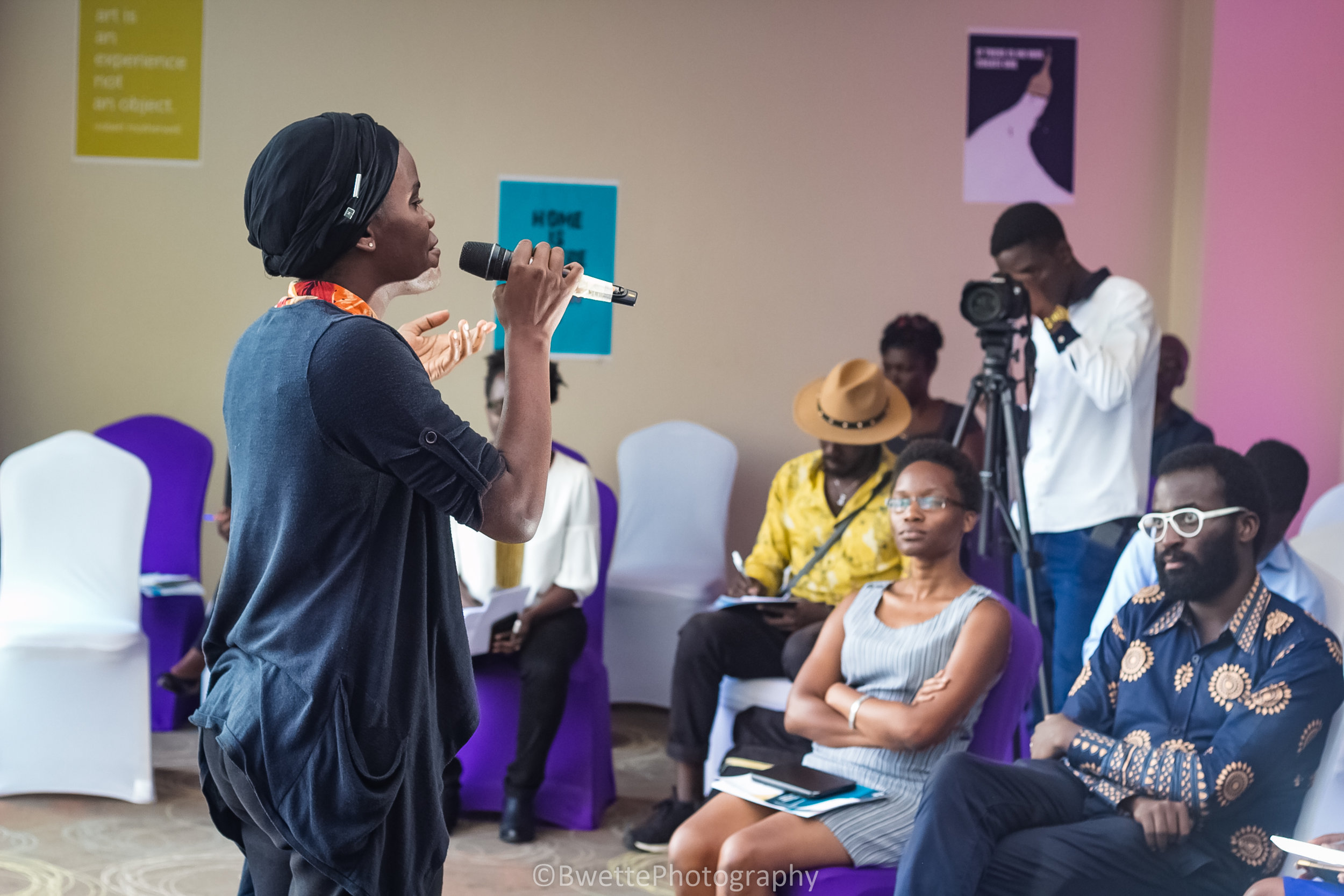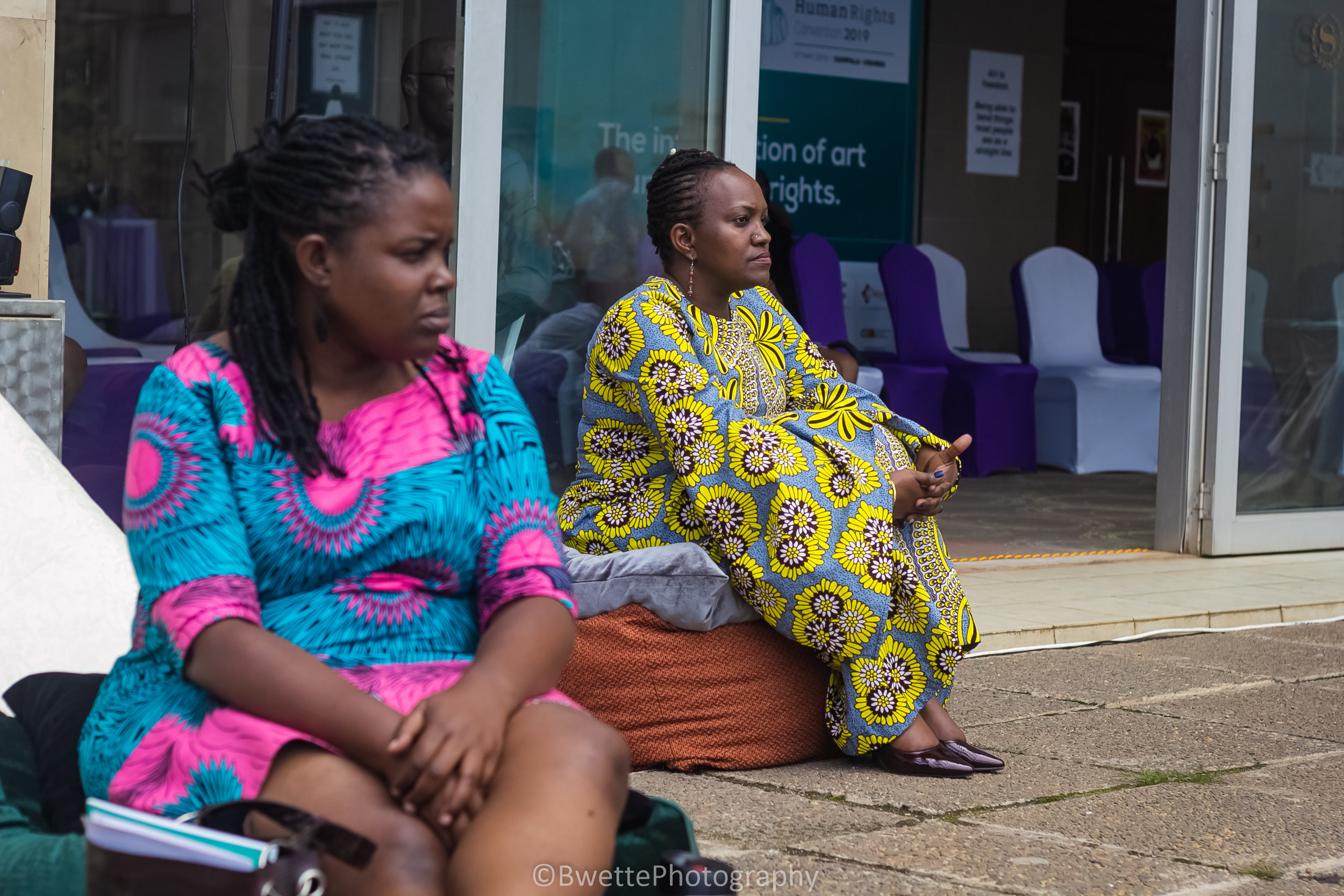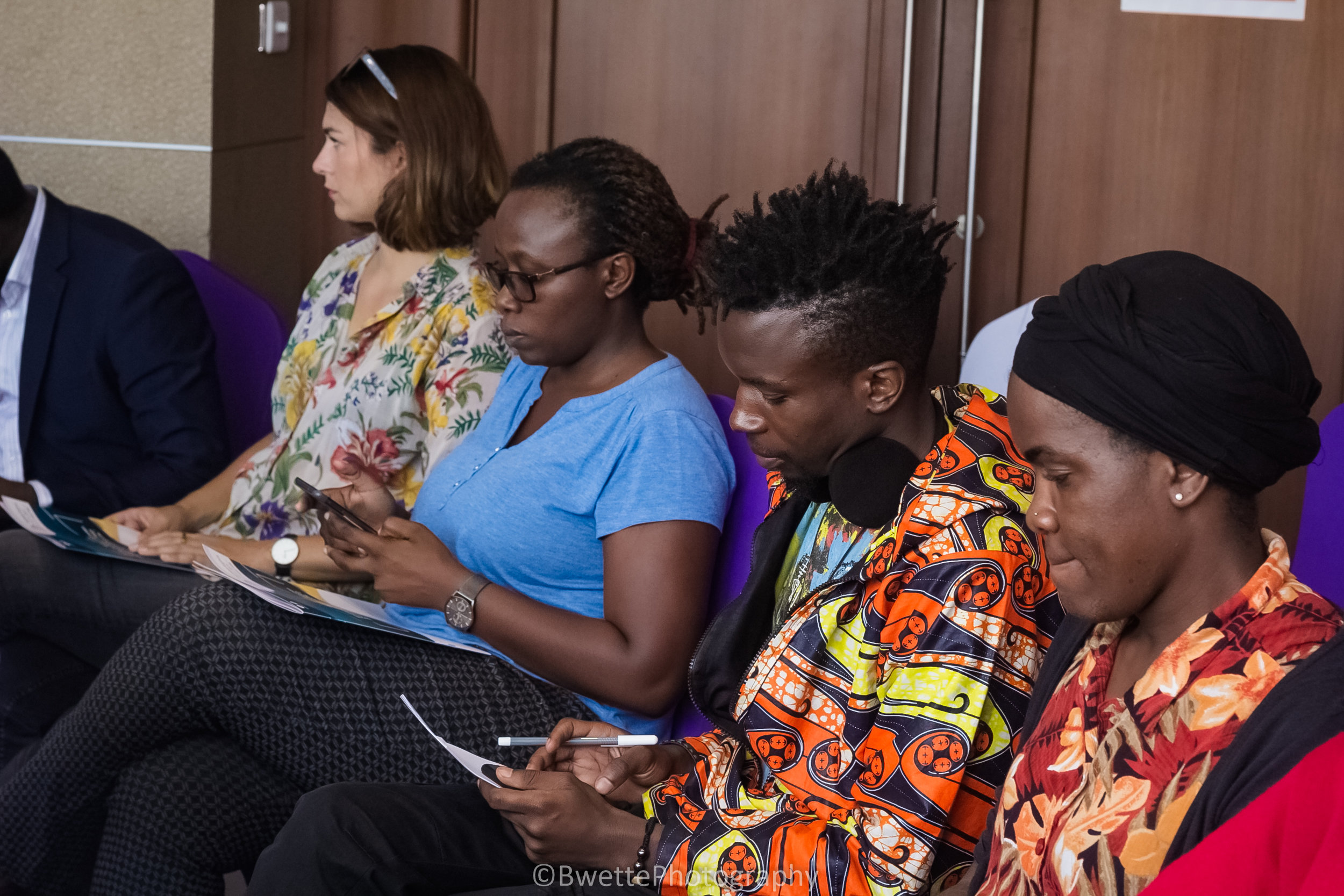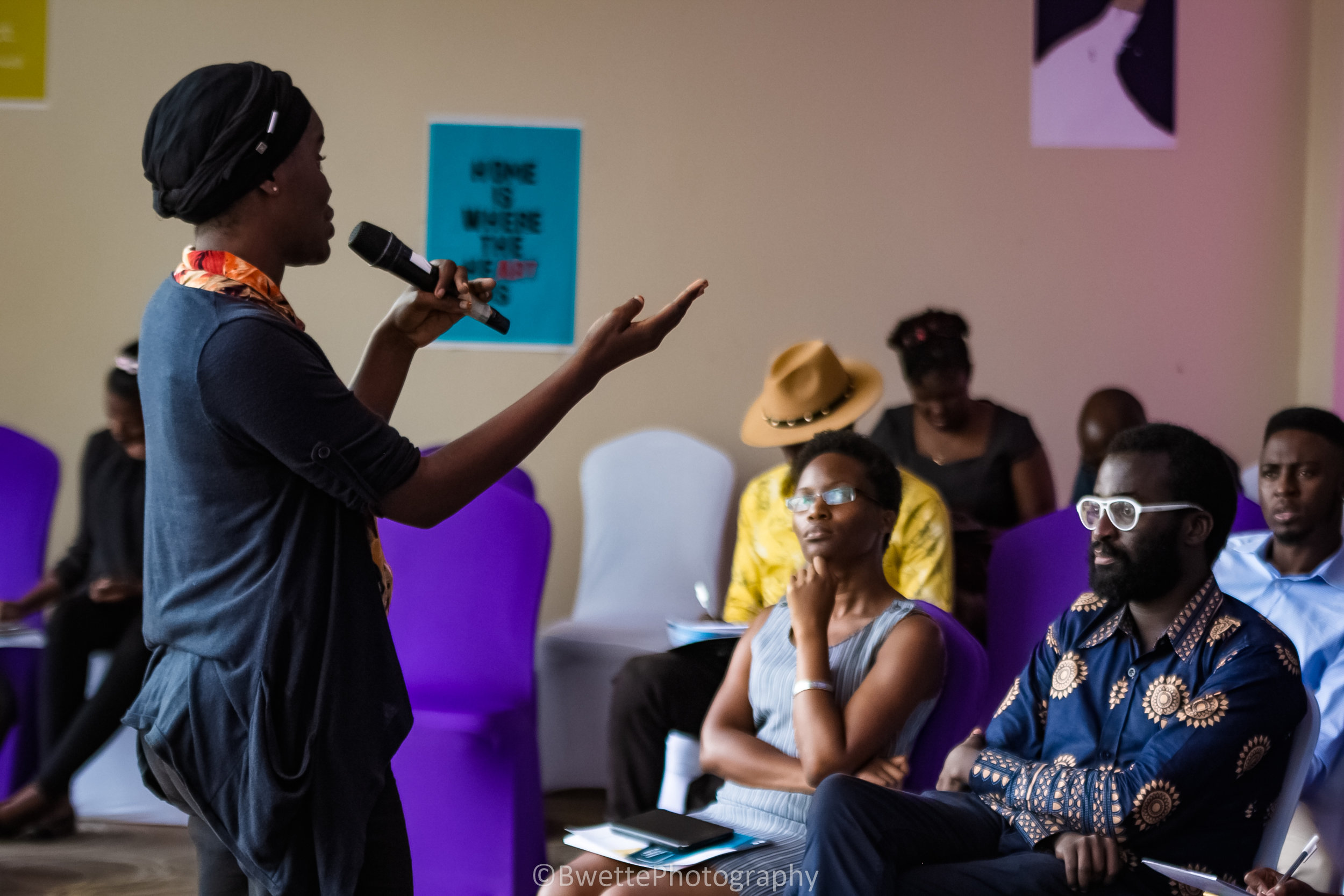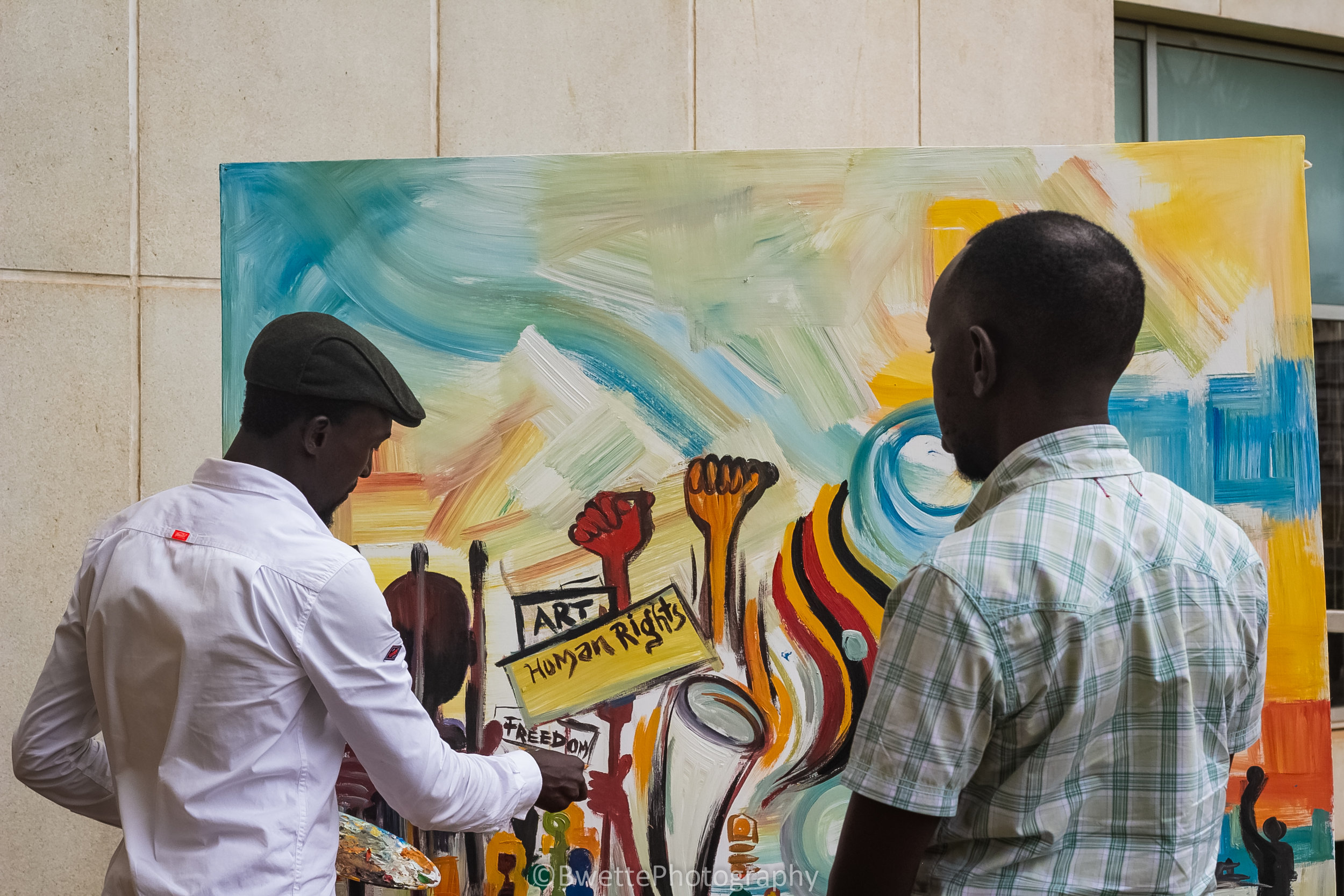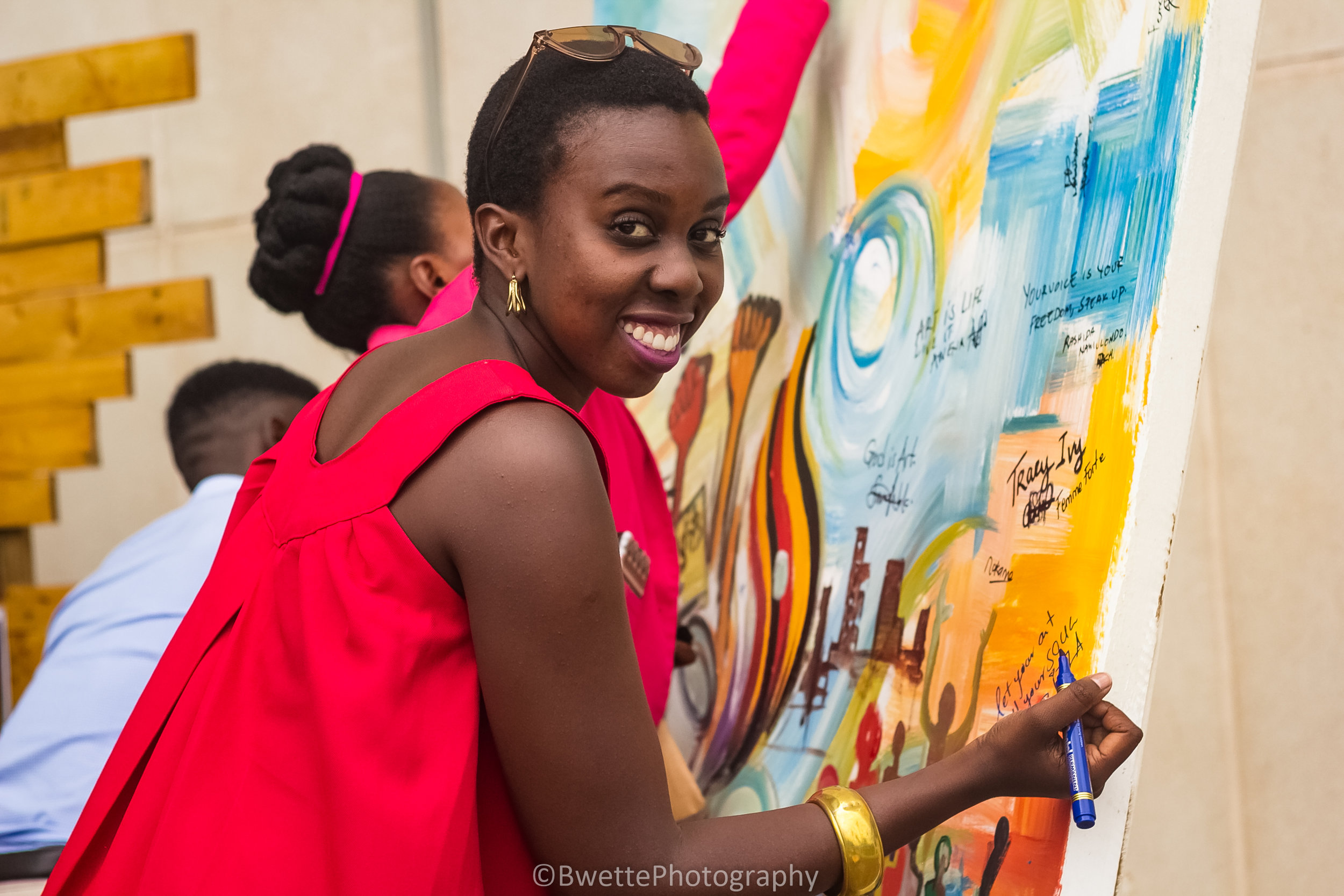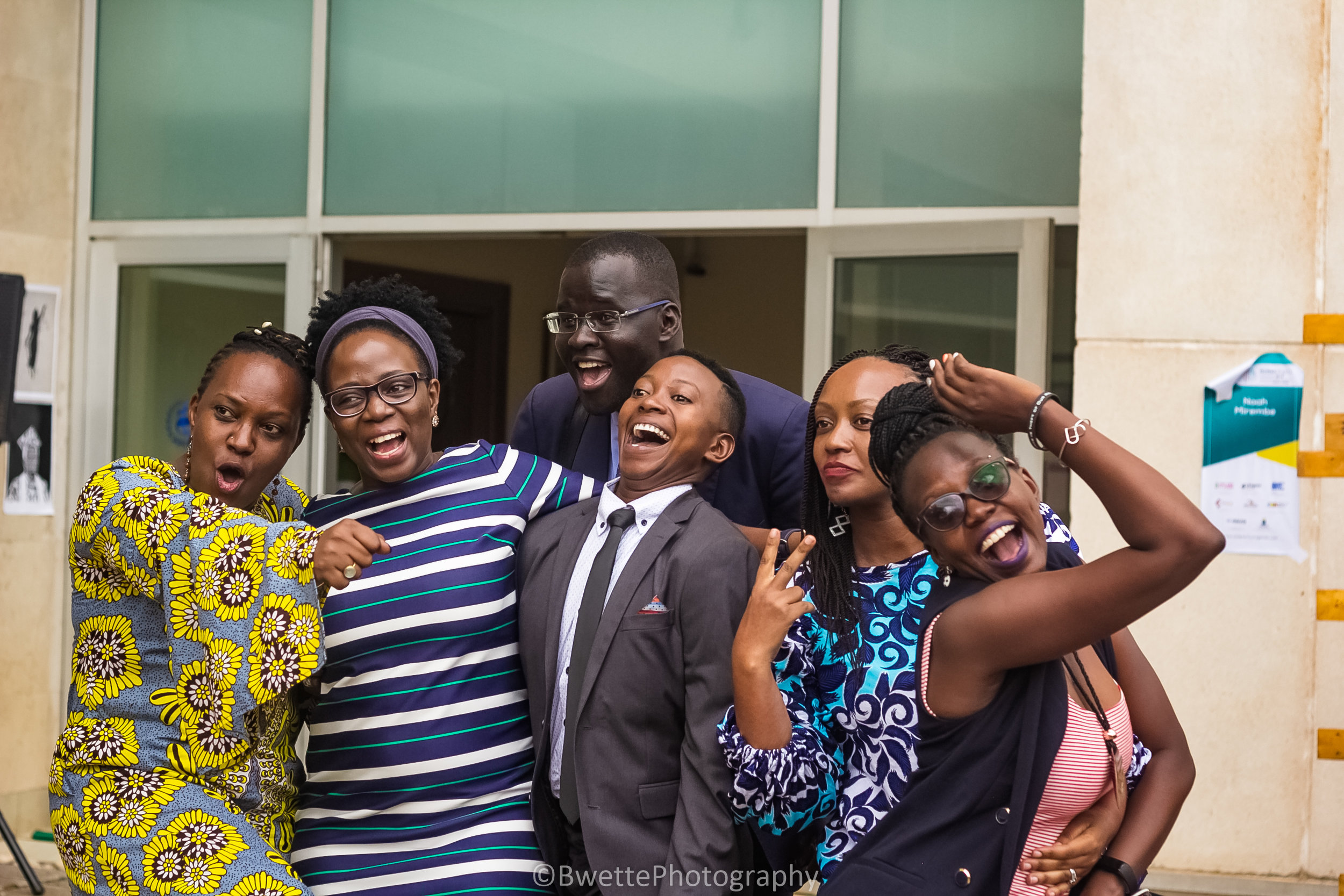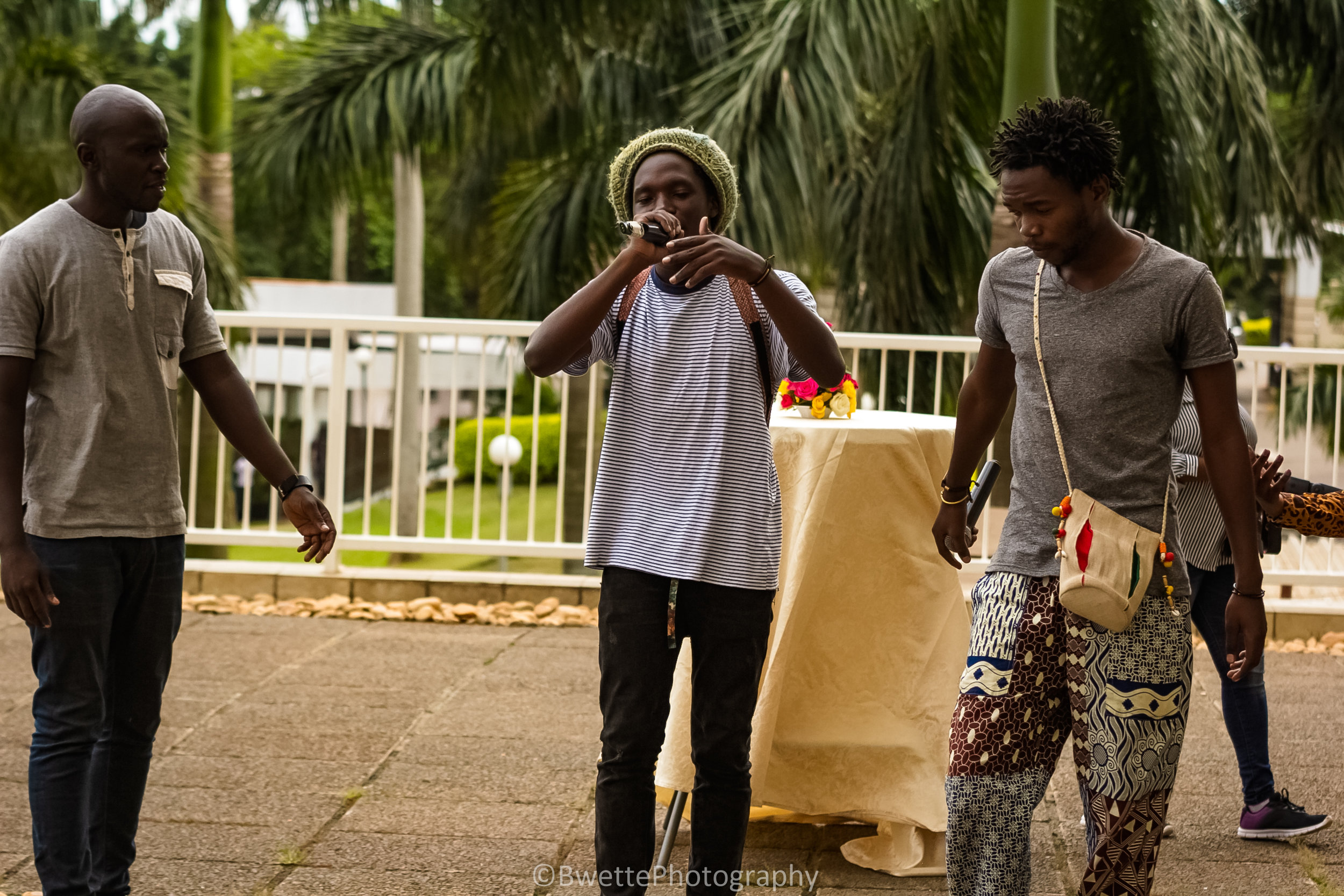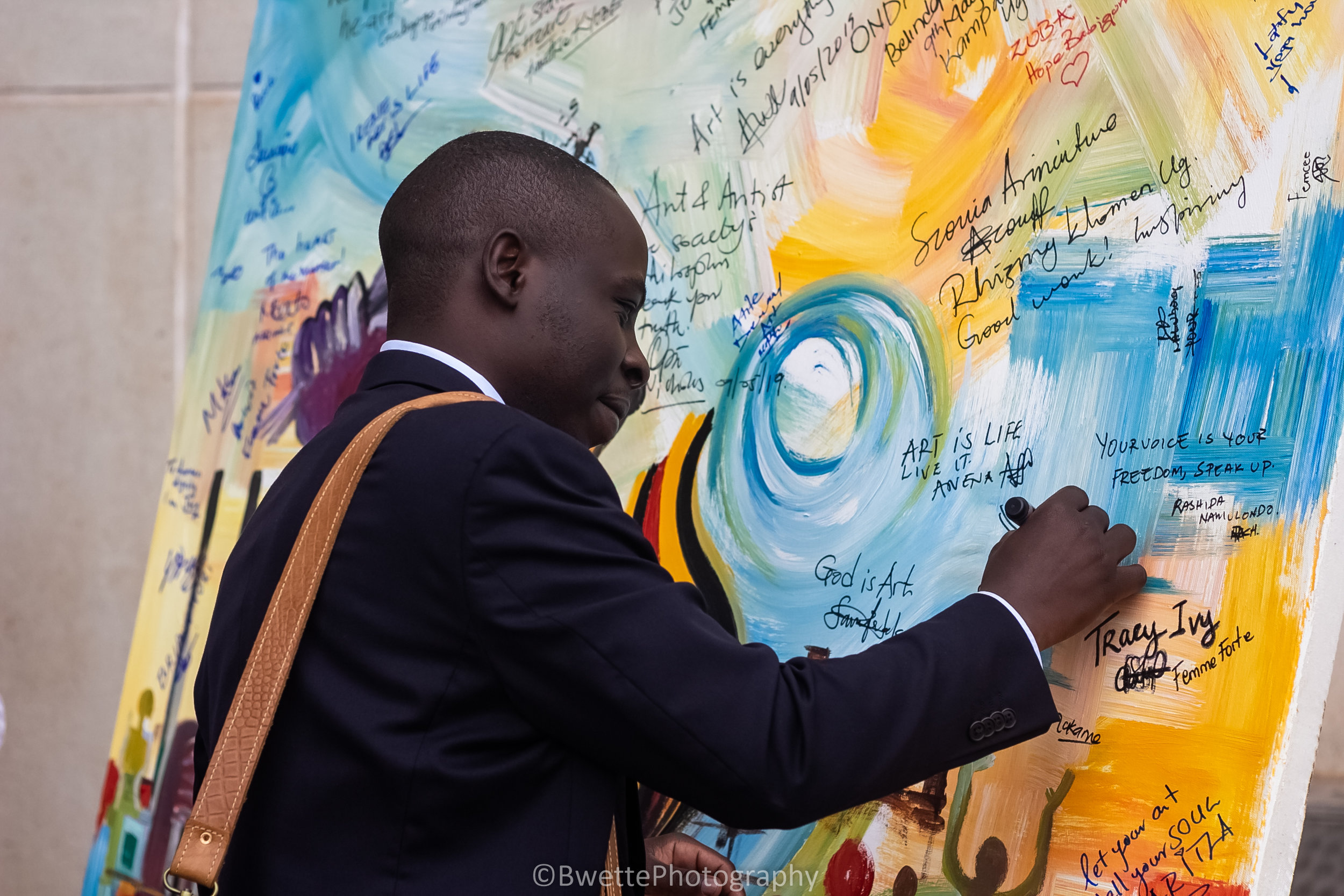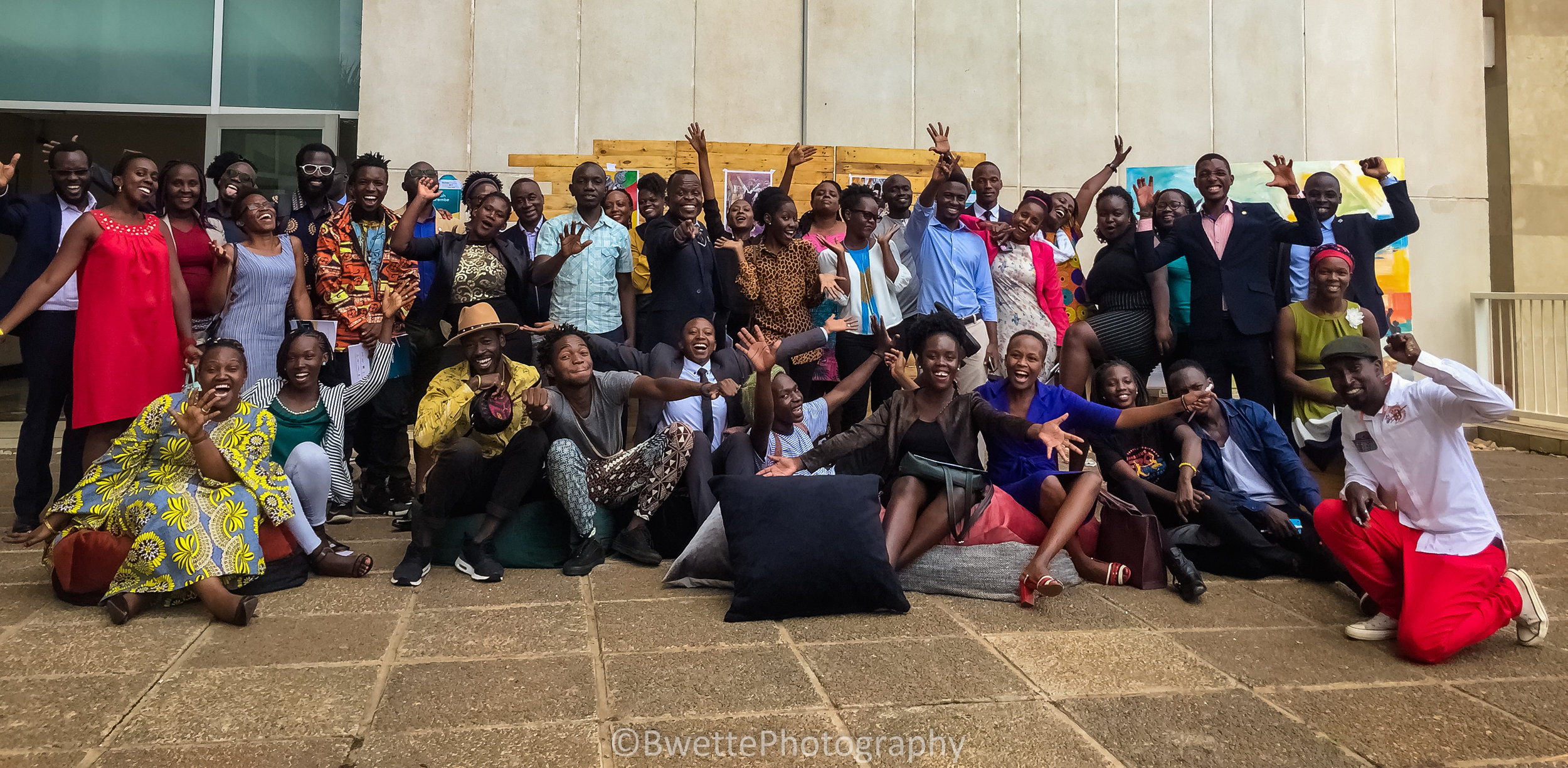The third annual Human Rights Convention organized by Chapter Four Uganda happened on 9th May, 2019. The overall theme of this year’s gathering was ‘Citizen Participation in Governance and Rule of Law’ and it brought together a number of partners that included Diakonia, Centre for Public Analysis (CEPA), CivSource Africa, Friedrich-Ebert-Stiftung (FES) Uganda, Akina Mama wa Africa, Uganda Consortium on Corporate Accountability (UCCA) and Embassy of Sweden in Uganda.
The convention featured a number of two-hour breakout sessions with independent panels each tackling a different sub theme. These were;
Human Rights and Development in the region
Refugee Rights; Promoting Inclusion and Protecting Rights.
Accountability in the #MeToo Era; Fighting Against Sexual Violence.
The Intersection of Art and Human Rights
As CivSource Africa, we were tasked with delivering on the discussion of The Intersection of Art and Human Rights, a session we dubbed ‘The heART Pieces.’
The moderator that day, Harriet Anena, is a Ugandan poet and short story writer. She is the winner of the 2018 Wole Soyinka Prize for Literature in Africa for her debut poetry collection, A Nation in Labour. The panel comprised;
Rashida Namulondo who is an award winning performance poet, actress and youth worker whose works seek to use narratives and stories as a source of social healing and development. She talked about consciousness and culture.
Acan Innocent Immaculate, a published Ugandan writer and medical student tackled confidence and imagination in the art space.
Noah Mirembe is an African feminist and transgender man with considerable knowledge on human rights, gender and sexuality. He expounded on the recent clamp down on artists and history of art in dictatorial regimes (within civil rights movement and revolutions fought)
The audience was rich with dancers, poets, visual artists, bloggers, published authors, owners of art exhibition spaces to mention but a few. The space and audience screamed art from start to finish.
Jackie Asiimwe, the Team Leader at CivSource, kicked us off saying art is a space that has not always been understood by human rights activists but several actions are actively being taken to remedy that. She added that there are multiple spaces to try and accommodate everybody including creatives.
At Harriet’s invitation, Noah was quick to remind us that, “If art can’t thrive, neither can human rights be upheld. We are all artists and must use that as an avenue for expression of our different truths. Art reminds us of the humanity in documents such as the 1948 Universal Declaration of Human Rights and the 1995 Constitution of the Republic of Uganda especially when used in the fight for said rights. So let’s not wait for any artists because the onus is on us all to do the work.”
He paraphrased a statement from Prof. Nabudere saying that knowledge is produced through the heart and then passed on to the mind. In this he meant that us all, having hearts, let’s work to inspire people with our knowledge. Let’s write about the generational trauma and thereby move closer to healing.
Rashida started off by asking the audience, one to another, to look and hold each other’s gaze right into the neighbor’s eyes as a test of comfort around each other. You can guess how that went. ‘If we can’t safely look into our neighbor’s eyes, that says a lot about our safety and consciousness. Can we then be safe expressing ourselves through our art?’
Rashida is a story teller with a backdrop of non-fiction writing. She talks of a time she wrote a sad tale of a father which, when her mother laid eyes on, broke into tears. It took explaining that she wasn’t referring to her own father in the story but as an artist, her work is a mirror of the society she knows.
‘Make human rights a culture. A culture of social justice. A culture of unity. One in which this calling and burden of art can thrive. As we do that, let us also actively consume this art so that more creatives are encouraged.’
As founder of The Sophie Muwanika Institute of Art for Change, a social venture that uses theatre modules to provide psycho-social support and alternative education to vulnerable communities, she couldn’t help but leave us with a therapeutic exercise to be practiced every single day. ‘Do not go to bed without writing down your feelings, your pains. Do not read them because in so doing you consume what you want to let go of. Fold, tear and throw away. Release them,’ she ended her submission.
Innocent, as the last of panelists, demanded of artists to look at themselves in their roles and make art that serves a purpose. ‘Art for art’s sake is a philosophy for the well fed.’
She is the author of ‘The pearl Trotters in Black, Yellow and Red’ and this drive to write comes from growing up without stories about her world and is actively changing that for posterity.
Because most participants were artists or art enthusiasts, the space was artsier than the rest. Guests to the space were welcomed by a dance to a compilation of ‘human rights themed music.’ A seemingly extempore poem amid the discussions by Mercy Apachi Agenorwot titled “The Status Quo” represented the disruption that art is made of and live rap performances by a group of emcees to boot.
Discourse of such weight had to attract reactions from its listeners. Some, like Benjamin Rukwengye of Boundless Minds, wondered why African writing is romanticized and spoken of like it’s exclusive yet it should be common place then encouraged us to never wane in telling our stories. Nicholas Opio, Executive Director of Chapter Four Uganda, shared memories of how girls and women, at the height of conflict in Northern Uganda, composed songs and dances around the conflict to tell their stories. ‘Art that inspires comes from deep honesty and authenticity,’ he posited.
‘How can art be used as an avenue to create the change we seek? I understand human rights but how can art be effective to affect people absent in spaces such as these?’ Scovia Arinaitwe asked.
Art exists in and around all of us but at the convention, all present had the privilege of witnessing a painting come to life in real time. Roland Tibirusya is a name that resonates with using brush strokes to reflect discourse as it happens on canvas. He graced our space and did not leave the magic behind. Art goes a long way in creating lasting memories and this is right up there among the many.
